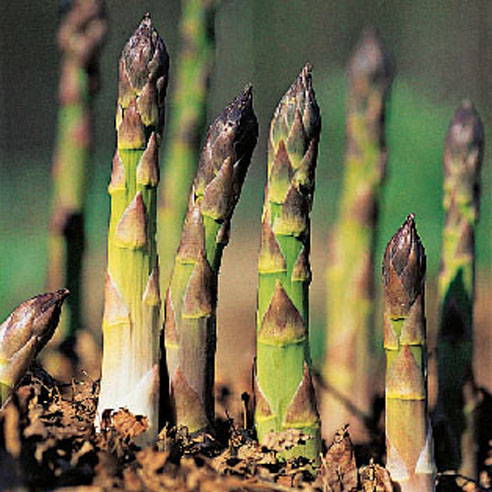The ideal method for growing asparagus is to prepare the area at least one season in advance by tilling and planting a cover crop to suppress weeds. This will help reduce stress on the asparagus plants during their first few years, ensuring a healthier and more vigorous crop. A cover crop turned into the bed also increases the organic matter in the soil which is good for the plants. Since asparagus is a perennial that can last for many years, choose a well-drained site that can be dedicated to asparagus for the foreseeable future.

Asparagus is usually grown by tilling an area and then digging trenches 6-8” deep and 3-5’ apart. The crowns (roots) are placed in the trenches 8” apart for narrow spears and 14” apart for thick spears. Cover the crowns with 1-2” of soil and fertilize heavily with compost or other phosphate-rich fertilizer. Add soil to the trenches three times during the next few weeks until the soil is mounded somewhat to avoid water pooling around the plants. Keep the plants hand-weeded and fertilized until midsummer, then mulch heavily with straw or leaves to suppress weeds. The asparagus “ferns” should be allowed to grow, since they feed the plants, then cut back after they die in the fall. A moderate harvest is usually possible the first year after planting, followed by full harvests every spring thereafter.
Red and black asparagus beetles are nearly always present in summer and can be treated with organic pesticides but are better removed by hand to minimize harm to the plants. Just drop the beetles and larvae into a can of soapy water to kill them. Larvae can also be killed by gently brushing the ferns with a soft broom - they die quickly after falling to the ground.
Although asparagus is not quite as simple to grow as annual crops, it is well worth the effort! Fresh, juicy asparagus spears are unrivaled in texture and flavor.
